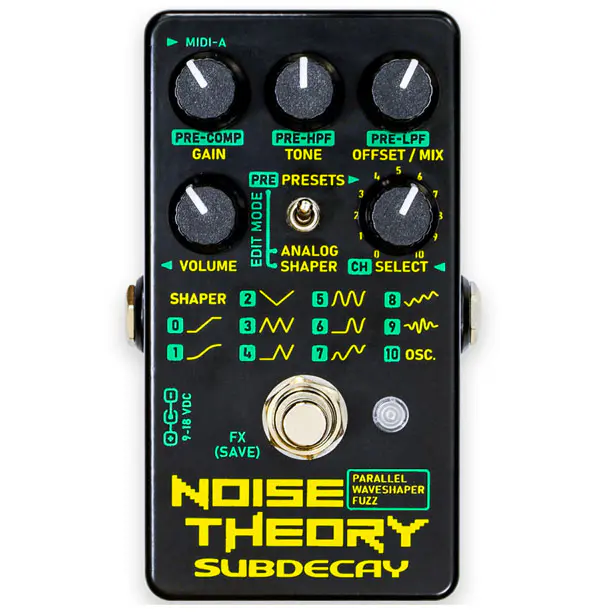
From a veteran boutique pedal manufacturer that built its name on tweakability comes one of the most feature-rich and unique fuzz pedals on the market: the Subdecay Noise Theory.
Presented as a “Parallel Waveshaper Fuzz,” the noise theory combines an analog and a digital fuzz circuit placed in parallel, and puts at the player’s disposal an arsenal of controls worthy of a little synthesizer, plus a standalone free app for a more comfortable on-screen editing.
There are 11 fuzz types, 1 analog and 10 digital. The latter feature distortion technologies like wave folding and wave shaping that are rarely found in fuzz pedals but have become quite common in Eurorack modules.
The digital and analog fuzzes can be blended via the Mix knob, which helps taming the extremely noisy and wild digital tones. The circuit also features a generous sculpting section, with controls for Tone, Hi and Lo-Pass Filters (placed before the fuzz) and also a compressor to even out what’s fed into the fuzzes.
Your favorite tones can be stored in 11 onboard preset slots (and 120+ via the editor), while all the pedal’s 30+ parameters can be controlled via Midi.
A super neat feature of this device is that it can function as a standalone 4-voice synth when connected to a Midi controller.
We added the Subdecay Noise Theory to our comprehensive article about the best weird fuzz pedals on the market.






















